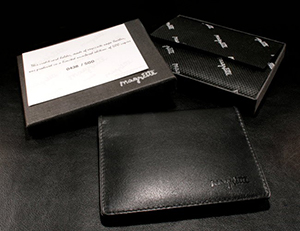Tel : (+33) 4 94 63 18 08
9am - 6pm from Monday to Sunday
René Magritte
Biography of René Magritte

René Magritte
René François Ghislain Magritte was born on November 21, 1898 in Lessines (Hainaut), Belgium.
The son of a tailor and a dressmaker, his childhood was punctuated (after his mother's suicide in 1912) by constant moves and the financial difficulties of the family.
Fascinated by Edgar Allan Poe, Maurice Leblanc, and Gaston Leroux, his adolescence was dreamy, already strongly marked by painting which he diligently practiced since the age of twelve, and very precarious. This period was also marked by his encounter with a girl two years his junior, Georgette Boucher, who would become his wife seven years later...
In 1916, he entered the Royal Academy of Fine Arts in Brussels where one of his professors was Constand Montald. A symbolist, specialized in monumental works where human figures get lost in dense vegetation, this artist significantly influenced a whole generation of Belgian artists. The "blank check", in 1965, is directly referencing Montald's work.
Working in Flouquet's studio, he discovered cubism and futurism, met Mesens (who would become the main writer of the Belgian surrealist movement), and married Georgette whom he accidentally encountered during a walk in the Botanical Garden of Brussels in 1920.
To support the household, he worked in advertising and designed wallpaper patterns.
The mid-1920s marked his encounter with Dadaism and his discovery of Giorgio De Chirico's work. Through "The Song of Love", he saw for the first time his profound thought of what art representation is and should be materialize.
It is then that he created with Mesens, but also with Nougé and Lecomte, the Brussels surrealism, an engaged, jocular, and protest movement that was initiated by a common hatred shared by all the group's protagonists, for the work of Jean Cocteau, who was nevertheless the inventor of the first surrealist works.
Now, amidst bell tower wars, intellectual rapprochements with Breton and the Parisian surrealists (Arp, Tanguy, but also Dalí, Ernst, or Eluard), internal quarrels, and declarations of intent, Magritte entered the "great intellectual circus of surrealists" that deeply marked the decade of the 1930s, and while the world was preparing for a second conflict, surrealistic artists excommunicated each other, seeking and finding in the opposing group all artistic and intellectual betrayals!
But beyond the quarrels, Magritte created, in the heart of these 1930s, a language that was personal to him, imbued with a very melancholic poetry, bathed in a humor of great intelligence, and a distance made of objectivity and doubt concerning the role of the artist.
The 1950s were the years of national and international recognition, after the 1940s when he was mainly in opposition to everything and everyone. From London to Chicago, from Rotterdam to Brussels, exhibitions and retrospectives followed one another, and Magritte was honored as one of the greatest revolutionaries of his time. He passed away on August 15, 1967, in Brussels.
If the general public knows his images and especially his famous "This is not a pipe", it is because Magritte, beyond a very interesting intellectual approach, knew how to invent a language that seduces painting specialists and newcomers, interests children and their parents, and speaks to everyone regardless of their geographical origins. Because Magritte, nearly 80 years ago, managed to decipher the images and challenge them, make us doubt them, and finally allow us to question this famous "Betrayal of images"!
(c) Natacha PELLETIER for PASSION ESTAMPES









